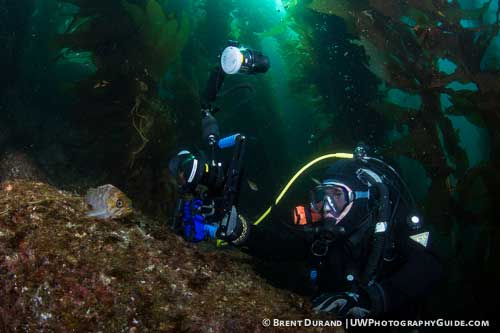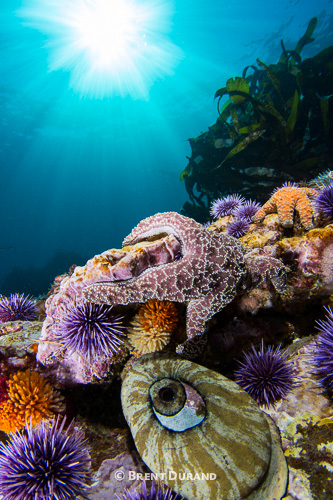In physics, backscatter (or backscattering) is the reflection of waves, particles, or signals back to the direction from which they came. It’s a diffuse reflection due to scattering, as opposed to specular reflection like a mirror. Backscattering has important applications in astronomy, photography and medical ultrasonography – and underwater photography, of course.
Words & Photos by Brent Durand, Underwater Photography Guide
Backscatter is the underwater photographer’s arch-nemesis. We’ve all taken shots riddled with the distracting white specs, whether they dot the whole picture or form two semi-circles on the edge of the frame. Backscatter can (and often does) destroy an otherwise-excellent image. The good news is that there are some universal techniques for eliminating backscatter that can be applied to a variety of composition styles, from macro to wide-angle.
To focus on specific techniques to reducing backscatter, we went directly to one of California’s underwater photo professionals to share with us methods of reducing or eliminating backscatter from underwater photos.
Brent Durand is an avid California beach diver, photographer, and writer dedicated to capturing unique underwater, ocean lifestyle and adventure images and the editor-in-chief of the Underwater Photography Guide. Please click here to read Brent’s methods of taking backscatter-free underwater photos, and be sure to follow his Facebook page (UWPG on Facebook) for more tips and updates on everything underwater-photography.

My buddy stopped to shoot a photo on a recent boat dive trip. Instead of moving in close where I might have stirred up the visibility or otherwise messed up the photo opp, I kept my distance allowing him to focus on nailing the shot.

